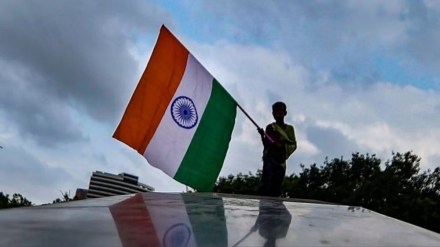The half-decade from 2009 to 2014 was a crucial chapter in India’s foreign policy, a playbook filled with nuanced diplomacy, strategic alignment, and a robust pursuit of economic and geopolitical interests. The international stage was set for a change, and India was poised to redefine its role within it. This in-depth analysis peels back the layers of this transformative period.
A New Chapter in the 2000s: India’s Active Diplomacy Awakens
In the bustling corridors of power in New Delhi, the dawn of the 2000s marked the awakening of a new era of Indian diplomacy. This was not mere posturing; it was a carefully crafted dance with strategic engagements.
India and the War on Terror
After the terror attacks that rocked Mumbai in 2008, India’s alignment with the global war on terror intensified. India sought to forge a united front against terrorism that transcended borders, and it went beyond rhetoric. Intelligence sharing, joint military exercises and aligning with Western powers were decisive actions that reshaped India’s international persona.
A Delicate Balancing Act: Between Washington and Beijing
Navigating the turbulent waters of global politics, India was engaged in a diplomatic tightrope walk with the United States and China, each with a different vision for the world and different expectations from India.
India-United States: From Strangers to Strategic Partners
The cheers that accompanied President Obama’s toast to a landmark nuclear deal with India in 2008 had a resonance beyond bilateral relations. Defence agreements, technology partnerships, and thriving trade were the visible manifestations of a new bond. But India’s nuanced diplomacy was evident in its refusal to align completely with the U.S., reflecting a savvy understanding of global multipolarity.
India-China: A Dance of Giants
With China, India’s diplomatic moves were both intricate and multifaceted. Joining hands in the BRICS alliance, the competition for influence in Asia, unresolved border tensions – all created a complex chessboard. But India’s dance with China was not about checkmate; it was about maintaining equilibrium.
India’s Global Rebranding: Economic Growth and Cooperation
India’s foreign policy during these years was not confined to geopolitical machinations. Economic goals were woven with diplomatic endeavours.
Economic Diplomacy: From Isolation to Integration
Trade agreements were not merely signed; they were executed with precision. Partnerships with Japan, South Korea, and ASEAN countries were strategic moves on the global chessboard. By reforming investment laws and actively wooing investors, India exhibited a vigorous intent to leverage foreign policy for economic growth.
Multilateral Cooperation: India’s Moment
This period also saw India shake off its spectator status in global forums. From climate change negotiations to health initiatives, India’s voice was assertive, nuanced, and influential.
Regional Dynamics: Navigating the Neighborhood
India’s foreign policy saw significant evolution in its own backyard.
Engagement with Pakistan: A Fragile Relation
Peace talks with Pakistan were emblematic of India’s complex regional relationships. While the pursuit of dialogue was genuine, underlying tensions, deep-seated mistrust, and historical baggage made it a fragile relationship.
The SAARC Initiative: A Struggle for Unity
India’s leadership in the South Asian Association for Regional Cooperation (SAARC) aimed for unity but often faced frustrating obstacles. Regional politics, diverging national agendas, and underlying mistrust often thwarted collective progress.
The Odyssey of India’s Foreign Policy
From 2009 to 2014, India’s foreign policy was a rich and intricate tapestry, reflecting a nation navigating the shifting sands of global geopolitics. The strategies were multifaceted, the approach flexible and resilient, and the outcomes diverse.
In a world where power dynamics are constantly shifting, India’s foreign policy journey during these years stands as a case study in adaptability and strategic thinking. The dance continues, the stage has evolved, but the lessons from this era remain pertinent.
India’s playbook from this period offers insights that are not confined to the Indian subcontinent. It raises questions, provides answers, and invites reflections that resonate across the global arena, making an indelible mark on the landscape of international relations, and offering a lens through which the evolving dynamics of power, influence, and interests can be viewed. Whether a model or a cautionary tale, it serves as a signpost for emerging powers seeking their place in a world that is both challenging and captivating.
